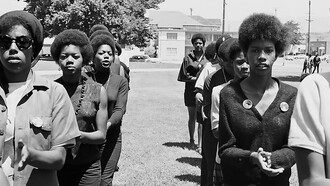Ramadan in Egypt has never remained the same and has always been an occasion for celebration, decorations, and traditions that have evolved over the past century. Even in times of economic hardship, Egyptians continue to observe traditions such as sighting the crescent of Ramadan, royal and presidential banquets, suhoor parties, and celebrations on radio and television programs. However, these traditions have undergone tremendous transformation from 1925 to 2025.
Under the Muhammad Ali dynasty, as recorded in Social Life in Egypt during the 19th century, individuals would gather in open spaces to see the Ramadan crescent. The procession was led by the muhtasib (market inspector) and notables, accompanied by musicians carrying the drums, waiting for the officials to signal. Following the sighting, an official document was sealed by the Sharia Court, and mosques were illuminated by lanterns. Early in the 20th century, by the hand of Khedive Abbas Hilmi II, the official announcement of Ramadan was left to the Sharia Court in Bab Al-Khalq. Festive processions marched to the court, comprising craftsmen floats bedecked with flowers, Sufi orders bearing banners, and government officials expecting well-wishers at Bakhri Palace in Al-Kharnfash.
In response to the global economic crisis following World War I, King Fuad established "People's Restaurants" in 1930. These kitchens served inexpensive meals for just a single qirsh in underprivileged areas like Sayyida Zeinab and Zainhum. Affluent individuals were encouraged to sponsor these initiatives, and voucher schemes allowed the poor to have free meals. King Fuad even redirected funds from royal celebrations to opening a large public kitchen in Bulaq. Farouk kept his father's projects intact and continued to host royal iftar banquets. In addition to inviting Al-Azhar scholars and generals to the Ras El-Tin Palace, he also hosted large community feasts in Abdeen Square, akin to today's Mawa'id Al-Rahman (charity iftars) for the poor.
Following the revolution in 1952 and the abolishment of the monarchy, the first Ramadan sighting in the republic was conducted at Helmiya's Sharia Court. It was attended by President Mohamed Naguib, Grand Imam Mohamed Al-Khidr Hussein of Al-Azhar, and Grand Mufti Hassan Mamoun. The first iftar of the new regime was hosted at the Presidential Palace, and it was attended by Egypt's 350 representatives of labor unions, a departure from royal exclusivity to mass representation. Greeting one another is one of Egypt's most enduring Ramadan traditions. The phrase "Ramadan Kareem" has existed since the 1940s and has moved from person-to-person greetings to telephones and, in the 21st century, text messages via social media platforms like Facebook and WhatsApp.
The Mesaharati, a caller who awakens people for suhoor traditionally, has been present during Ramadan in Egypt since the 9th century. In the past, he would go round the streets, drumming and crying out, "Wake up, sleeper, and praise the Everlasting." This has been largely discredited in modern urban areas due to developments like alarm clocks and mobile reminders but is still observed in some traditional neighborhoods. Taraweeh prayers remain a popular Ramadan activity, with families going to mosques after iftar. Each mosque competes to have the most engaging recitations, and there is a friendly competition to complete the Quran during the sacred month. This practice has existed for over a century.
Free food for the poor has been provided by Mawa'id Al-Rahman since the 9th century. While public meals have been on the decline in recent decades, the practice has evolved into sending Ramadan food packages to poor families. Furthermore, young volunteers dispense meals and water bottles at dusk to commuters and traffic congestion. Egyptian Ramadan tables remain filled with classic offerings. Kunafa and Qatayef, more than a century-long fixtures, were originally handmade but are now mass-produced on modern machinery. Nevertheless, staples like foul (fava beans) and khushaf (dried fruit compote) continue to be the hallmarks of the Ramadan meal.
The Midfa' Ramadan (Ramadan Cannon) formerly gave notice of the beginning of fasting and iftar. It started being fired in the Cairo Citadel by Muhammad Ali. When radios became popular, their role was replaced by it, and by 1983, live firing of the cannon had been reinstated again by Interior Minister Ahmed Rushdi from the Citadel at Maghrib (sunset) and suhoor. In the 1990s, structural damage fears prompted the cannon to be relocated to Mokattam, where it remains a symbolic Ramadan attraction. Egyptian radio has been a characteristic force on Ramadan traditions since 1954.
Programs like Fawazeer Amal Fahmy (puzzles), Alf Leila wa Leila (A Thousand and One Nights), and readings by well-known Quran readers like Sheikh Mohamed Rifaat, Mustafa Ismail, and Abdel Basit Abdel Samad became Ramadan culture. As television emerged, Ramadan programming expanded to include series, drama, and entertainment shows that continue to draw viewers.
In the 1970s, President Anwar Sadat pioneered a new custom by witnessing the crescent from Cairo Tower. He then proceeded to spiritual solitude in Saint Catherine's Monastery for ten days and stayed for the remainder of Ramadan in his birth town, Mit Abu Al-Kum, surrounded by his kinfolk and neighboring villagers. Ramadan in Egypt has also dramatically changed during the past century.
From presidential iftars to royal banquets and public dining halls, from traditional Mesaharatis who carry drums to reminders on cell phones, and from Ramadan entertainment by the media to lantern-lit mosques, Egyptian Ramadan customs continue evolving while still carrying the traditional cultural touch. The spirit of charity, collectivity, and piety is always at the center of these celebrations, which means Ramadan in Egypt is always unforgettable.















